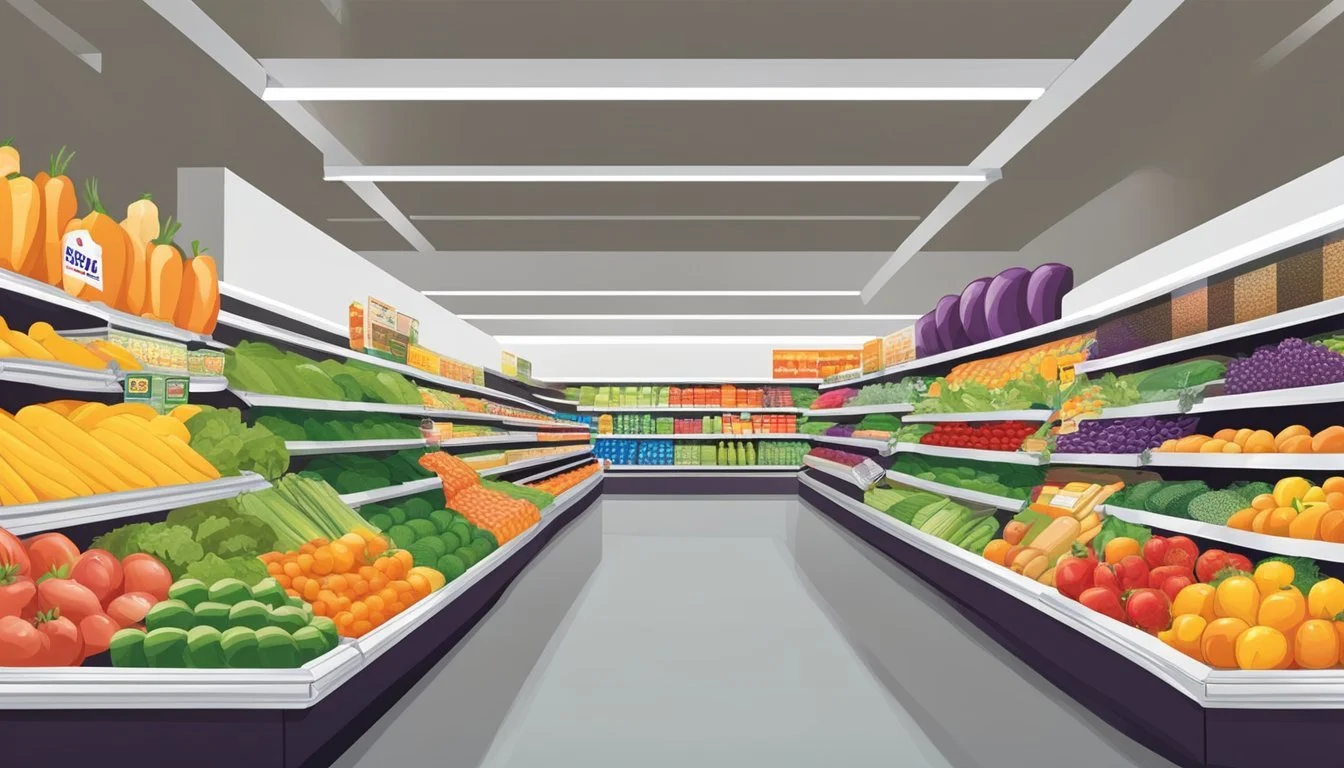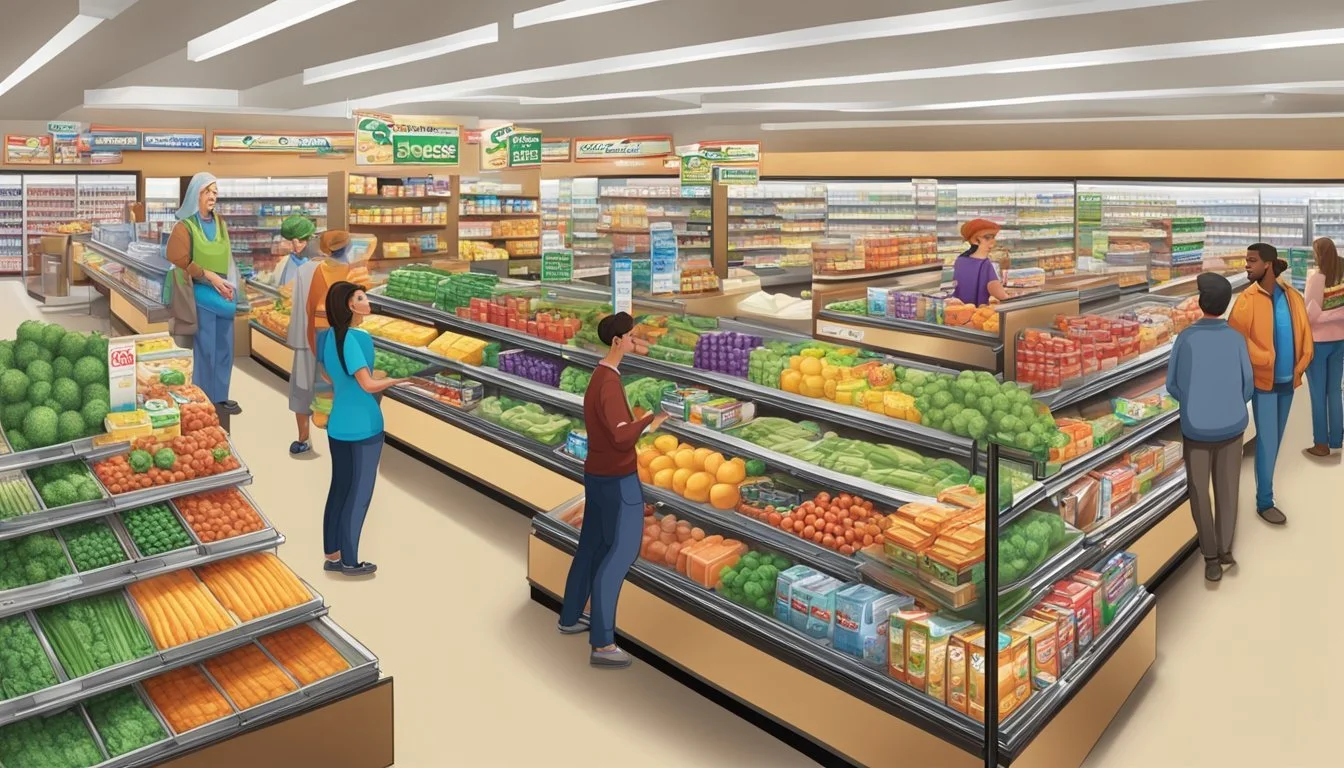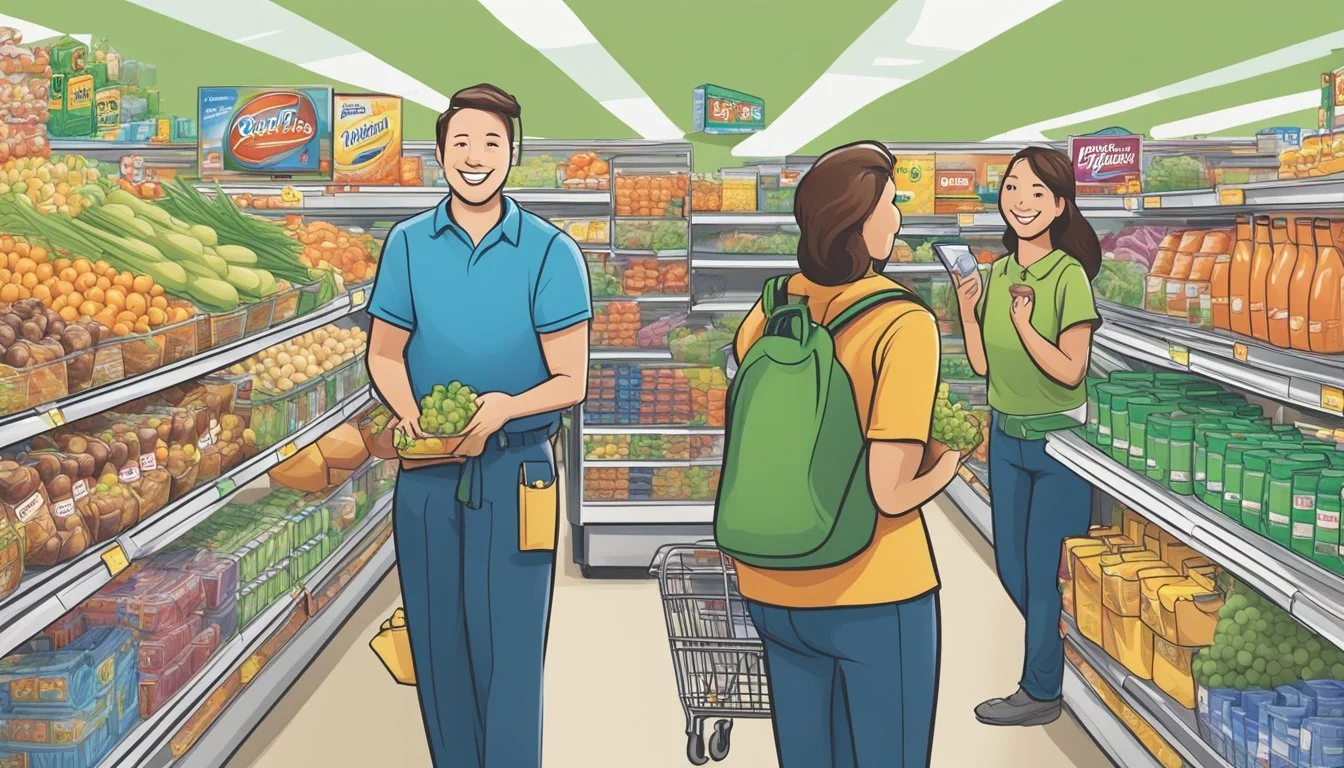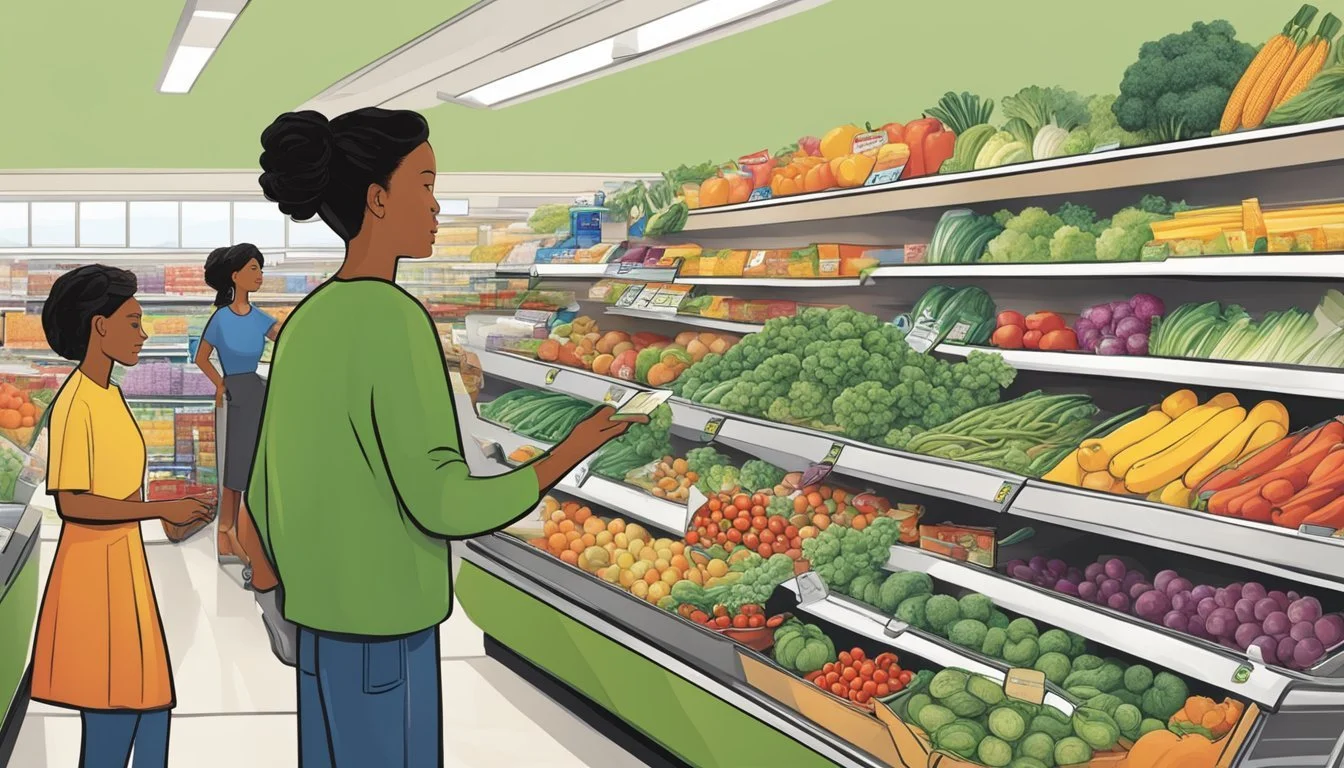Ralphs vs Save Mart
A Comprehensive Comparison of Prices, Selection, and Service
Grocery shopping can be a significant part of a household's budget, making it crucial to choose the right store for the best value. Ralphs and Save Mart are two popular supermarket chains that offer a range of products to their customers.
When comparing these two stores, several factors come into play, including pricing, product quality, selection, and overall shopping experience. While both Ralphs and Save Mart have their strengths, Ralphs generally offers slightly lower prices and a wider selection of products, giving it a slight edge over Save Mart.
The choice between Ralphs and Save Mart may ultimately depend on individual preferences and location. Factors such as store cleanliness, customer service, and available promotions can also influence a shopper's decision. By examining these aspects, consumers can make an informed choice about which grocery store better suits their needs.
Overview of Ralphs and Save Mart
Ralphs and Save Mart are prominent regional grocery chains serving different parts of the United States. Both offer a wide range of products and services to meet customers' daily shopping needs.
History and Background
Ralphs, founded in 1873 in Los Angeles, is one of the oldest supermarket chains in the U.S. It began as a small grocery store and grew into a major chain in Southern California. In 1998, Ralphs became a subsidiary of Kroger, the largest supermarket operator in the country.
Save Mart Supermarkets started in 1952 in Modesto, California. The company expanded through acquisitions and organic growth, becoming a significant player in Northern California and Northern Nevada. Save Mart has maintained its independence as a privately held company.
Market Presence and Locations
Ralphs operates primarily in Southern California, with over 180 stores across the region. Its stronghold is in the Los Angeles metropolitan area, where it competes with other major chains and local grocers.
Save Mart has a more diverse footprint, with approximately 200 stores spread across Northern California and Northern Nevada. The company operates under several banners, including Save Mart, Lucky, and FoodMaxx.
Both chains cater to local preferences, adapting their product offerings and store layouts to suit regional tastes. Ralphs benefits from Kroger's national purchasing power, while Save Mart leverages its regional focus to maintain strong community ties.
Store Ambiance and Cleanliness
Ralphs and Save Mart prioritize creating pleasant shopping environments for their customers. Both chains focus on maintaining clean, well-organized stores with attentive staff. However, there are some differences in their approaches to store ambiance and upkeep.
In-Store Experience
Ralphs stores often feature modern, stylish designs with bright lighting and wide aisles. The chain emphasizes a welcoming atmosphere, with friendly staff available to assist customers. Ralphs' cleanliness standards are generally high, with regular cleaning schedules and quick responses to spills.
Save Mart stores typically have a more traditional supermarket feel. They focus on functionality and ease of shopping. Save Mart employees are known for being helpful and courteous. The chain maintains clean stores but may not have the same polished look as Ralphs.
Both retailers offer pleasant shopping experiences, but Ralphs tends to edge out Save Mart in terms of overall store ambiance.
Maintenance and Store Layout
Ralphs invests heavily in store maintenance and updates. Their layouts are often intuitive, with clear signage and logical product placement. The chain regularly renovates stores to keep them fresh and appealing.
Save Mart maintains a practical approach to store layout. While clean and organized, their stores may not undergo frequent updates. The layout is straightforward, focusing on efficiency rather than aesthetics.
Both chains keep their stores tidy, but Ralphs typically presents a more curated shopping environment. Save Mart's approach is more utilitarian, emphasizing functionality over style.
Product Selection and Quality
Ralphs and Save Mart offer diverse product selections with varying quality across different departments. Both stores strive to meet customer needs, but their offerings differ in key areas.
Fresh Produce and Organic Options
Ralphs provides an extensive selection of fresh fruits and vegetables, with a strong focus on organic produce. Their produce section features vibrant displays of seasonal items and a wide variety of organic options. Save Mart also offers quality produce, but their organic selection may be more limited compared to Ralphs.
Ralphs emphasizes freshness, often sourcing from local farms when possible. This approach results in crisp vegetables and flavorful fruits. Save Mart's produce is generally fresh, but the selection may vary by location.
Both stores offer pre-cut fruit and vegetable options for customer convenience. Ralphs tends to have a larger variety of these prepared items.
Meat and Seafood Comparison
Ralphs boasts a well-stocked meat department with high-quality options. They offer prime cuts of beef, tender chicken, and a variety of pork products. Their seafood section typically includes both fresh and frozen options, with a focus on sustainable sourcing.
Save Mart's meat department is competitive, offering a range of cuts and types. Their beef selection includes choice grades, while their poultry options are generally fresh and affordable. Save Mart's seafood offerings may be more limited than Ralphs, but still provide basic options for shoppers.
Both stores offer pre-marinated meats and ready-to-cook options for customers seeking convenience.
Bakery and Prepared Foods
Ralphs excels in their bakery department, offering a wide range of freshly baked goods. Their selection includes artisanal breads, custom cakes, and pastries. Ralphs also provides an array of store-prepared foods, from rotisserie chickens to gourmet salads and hot meals.
Save Mart's bakery offers staple items like breads, cakes, and cookies. While their selection may be more limited than Ralphs, the quality is generally good. Save Mart's prepared foods section typically includes basic options like rotisserie chickens and pre-made sandwiches.
Both stores cater to different dietary needs with gluten-free and vegan options in their bakery and prepared foods sections.
Cost and Affordability
Ralphs and Save Mart employ different strategies to attract budget-conscious shoppers. Both chains focus on providing value, but their approaches to pricing, discounts, and store brands vary.
Pricing Strategies
Ralphs uses a mix of everyday low prices and weekly specials to appeal to customers. They often feature loss leaders - items priced below cost to draw shoppers in. Save Mart tends to have slightly higher regular prices but compensates with more frequent sales and promotions.
Ralphs typically offers lower prices on national brands, while Save Mart may have better deals on produce and meat. Both chains adjust pricing based on local competition and regional supplier costs.
Discounts and Coupons
Both stores provide digital and paper coupons to help customers save. Ralphs' loyalty program offers personalized deals and fuel points. Save Mart's weekly ad features numerous sale items and digital coupons loadable to store cards.
Ralphs tends to have a wider selection of manufacturer coupons available. Save Mart focuses more on store-specific discounts and promotions. Both chains offer senior discounts on select days.
Store Brand vs. Name Brand
Ralphs' Simple Truth organic line and Kroger brand items are often priced 10-20% below comparable name brands. Save Mart's store brands like Sun Harvest and Sunny Select aim for similar savings but have a smaller selection.
Name brand items are generally cheaper at Ralphs due to their larger purchasing power. Save Mart may have better prices on regional brands. Both chains frequently discount store brands to compete with name brand sales.
Customer Service and Satisfaction
Ralphs and Save Mart both prioritize customer service, but their approaches and customer satisfaction levels differ. Key factors include staff interactions and overall ratings from shoppers.
Staff Friendliness and Helpfulness
Ralphs emphasizes a friendly shopping experience. Their employees undergo regular training to improve customer interactions. Staff members are typically easy to locate and willing to assist with product inquiries or store navigation.
Save Mart also focuses on courteous service. Their employees are known for their product knowledge, especially in specialty departments like deli and produce. Save Mart's smaller store sizes often allow for more personalized attention from staff.
Both chains encourage employees to greet customers and offer help proactively. However, some shoppers report inconsistent experiences across different store locations for both retailers.
Customer Feedback and Ratings
Ralphs generally receives positive feedback for its customer service. Online reviews frequently mention helpful cashiers and responsive management. The chain's parent company, Kroger, consistently ranks well in customer satisfaction surveys.
Save Mart's customer ratings are more mixed. Some stores earn praise for attentive service and community involvement. Others face criticism for long checkout lines or product availability issues.
Consumer Reports rankings place Ralphs higher than Save Mart for overall customer satisfaction. Ralphs scores particularly well in checkout speed and store cleanliness categories.
Both chains actively solicit customer feedback through surveys and loyalty programs. They use this data to improve service and tailor store offerings to local preferences.
Shopping Experience and Convenience
Ralphs and Save Mart offer distinct shopping experiences, with each store focusing on different aspects of customer convenience. Their approaches to store layout, product selection, and technological integration shape how shoppers interact with their services.
Ease of Finding Products
Ralphs stores typically feature wide aisles and clear signage, making navigation straightforward. Products are organized logically by category, with staples like dairy and produce easily accessible.
Save Mart emphasizes a neighborhood market feel in many locations. Their layouts often incorporate local touches, though this can vary store to store. Some shoppers find Save Mart's organization intuitive, while others may need time to adjust to each location's unique setup.
Both chains offer store apps to help locate items, but Ralphs' digital integration is generally more robust.
Checkout Efficiency
Ralphs invests heavily in self-checkout options, with many stores offering numerous kiosks to reduce wait times. Their loyalty program integrates seamlessly with checkout systems for quick discounts.
Save Mart maintains a mix of traditional and self-checkout lanes. While not as tech-forward as Ralphs, they often staff more lanes during peak hours to manage flow.
Both stores accept digital coupons, streamlining the checkout process for deal-savvy shoppers.
Online Shopping and Delivery Options
Ralphs, leveraging Kroger's infrastructure, provides comprehensive online shopping services. Customers can order for delivery or pickup through user-friendly apps and websites.
Save Mart's online presence varies by location. Some stores offer robust e-commerce options, while others have more limited services. Their partnership with Instacart expands delivery reach in many areas.
Both chains have invested in expanding their digital capabilities, recognizing the growing demand for convenient shopping alternatives. Ralphs generally offers more consistent online services across its locations compared to Save Mart's more varied approach.
Brand Loyalty and Consumer Trends
Brand loyalty plays a crucial role in grocery store preferences. Consumers often develop strong attachments to specific retailers based on various factors. Shopping habits and market trends also influence where people choose to buy their groceries.
Factors Influencing Loyalty
Price competitiveness ranks high among factors affecting brand loyalty. Walmart and Kroger consistently score well in this area, with Walmart offering lower prices on both store brands and name brands. A typical shopping basket at Walmart may cost $119.44, compared to $126.35 at Ralphs.
Store accessibility also impacts loyalty. Walmart's extensive network, with locations within 10 miles of 90% of the U.S. population, contributes to its high loyalty score of 3.22.
Product quality and selection are key considerations. Ralphs often edges out competitors in pricing for common grocery items, potentially boosting customer satisfaction.
Consumer Preferences and Behavior
Many shoppers remain loyal to name-brand foods. 43% of Americans buy store-brand versions only occasionally or not at all, according to Consumer Reports. This behavior persists despite potential cost savings.
Shopping habits have evolved, with some consumers showing increased interest in store brands. Ralphs and Save Mart both offer their own product lines to cater to this trend.
Convenience and shopping experience influence consumer choices. Factors like store layout, cleanliness, and customer service can sway preferences between Ralphs and Save Mart.
Health and wellness trends affect purchasing decisions. Consumers may favor stores offering a wider selection of organic, natural, or specialty diet products.








